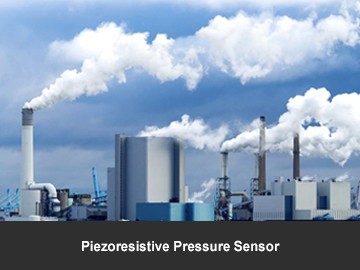Piezoresistive Pressure Sensor|Holykell
Piezoresistive pressure sensor is one of the very-first products of MEMS technology and can be used to to measure the pressure of liquids and gases. It is widely used in aerospace, petrochemical, power machinery, biomedical engineering, meteorology, geology and other fields.
What's a Piezoresistive Pressure Sensor
Piezoresistive pressure sensor is a kind of pressure sensor, which refers to a sensor made by using the piezoresistive effect of single crystal silicon material and integrated circuit technology. After the monocrystalline silicon material is subjected to force, the resistivity changes, and the electrical signal proportional to the force change can be obtained through the measurement circuit.

How Piezoresistive Pressure Sensors Work?
The basic principle of a piezoresistive pressure sensor is that it contains thin wafers of silicon embedded between protective surfaces that is usually connected to a Wheatstone bridge. The Wheatstone bridge runs a small amount of current through the sensor. When the resistance changes, less current passes through the pressure sensor. Sp the Wheatstone bridge detects this change and reports a change in pressure.
What are the Advantages of Piezoresistive Pressure Sensor
Piezoresistive pressure sensors have simple construction which also means low cost and durability, and they're robust with good resistance to shock, vibration, and dynamic pressure changes.






